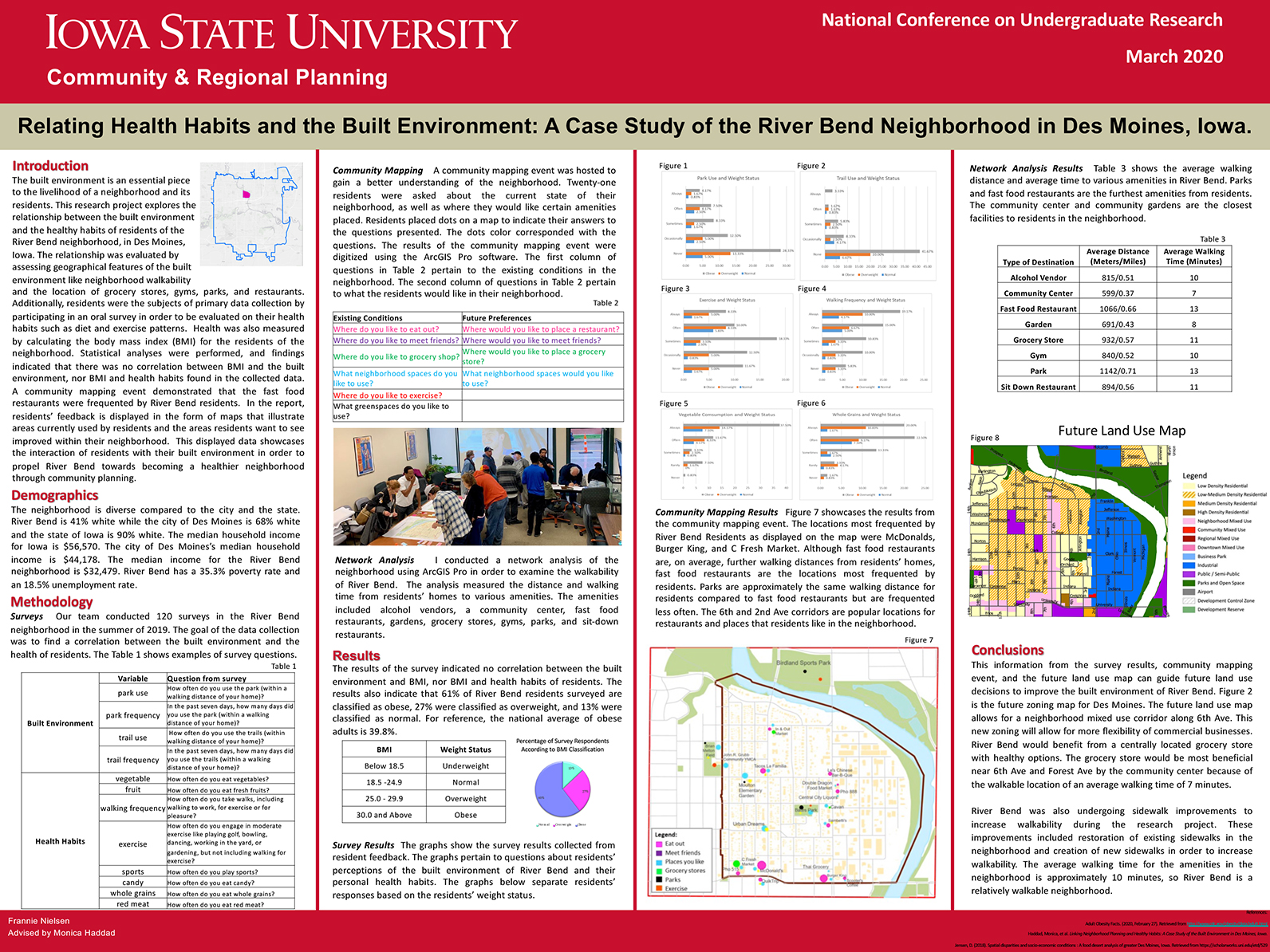ISU College of Design students’ research recognized at national and state levels
04/13/20
AMES, Iowa — Three Iowa State University College of Design students received recent recognition for their undergraduate research.
Community and regional planning seniors Jasmine Khammany of Des Moines; Frannie Nielsen, also of Des Moines; and Emily Vanek of Dubuque were among 58 Iowa State undergraduate students selected to present their work at the 34th annual National Conference on Undergraduate Research (NCUR 2020), originally scheduled March 26–28 at Montana State University.
About 4,000 undergraduate students from across the US typically present their research at this annual conference, the largest undergraduate research conference in the country.
Nielsen also was chosen to share her work at Research in the Capitol scheduled March 24 in Des Moines. More than 60 undergraduate students from Iowa’s three Regents universities (Iowa State, the University of Iowa and the University of Northern Iowa) display their research posters and describe their work for legislators and others at the annual event.
Both NCUR and Research in the Capitol this year were canceled in light of concerns about the COVID-19 pandemic.
Disaster recovery
Working as a team, Khammany and Vanek researched dislocation and disaster recovery within socially and economically vulnerable communities, including low-income, minority and immigrant populations and residents who rent rather than own their homes.
Following an EF-3 tornado that damaged or destroyed significant numbers of homes and businesses in Marshalltown in July 2018, the students worked with research mentor Sara Hamideh, former assistant professor of community and regional planning, to examine a random sample of 660 households within the tornado’s path. They recorded damage to those households’ residences and progress made toward repair in the six months after the tornado.
“After natural hazards, socially vulnerable populations tend to be at a greater disadvantage in post-disaster recovery due to the lack of access to capital and other factors such as discrimination,” Khammany and Vanek said in their research abstract.
“Our analyses conclude that socially vulnerable households, compared to all interviewed households, had not made significant progress towards repairs, despite the lack of alternative, temporary housing options, due to their limited access to financial and recovery resources.”
The goal of the research was to identify ways state and local organizations can better address the needs of socially and economically vulnerable populations after “low-attention disasters,” such as the Marshalltown tornado, which received limited attention beyond local news.
Neighborhood health habits
Nielsen’s research focused on the River Bend neighborhood of Des Moines and how the built environment related to residents’ health habits.
With a lower median income and higher percentage of non-white residents than the city’s averages, River Bend is located in a “food desert,” meaning grocery stores are scarce and outside walkable distances. Fast food restaurants, on the other hand, are easily accessible. So are local parks, offering opportunities for exercise.
Nielsen, with the help of her research mentor, Monica Haddad, associate professor of community and regional planning, conducted oral surveys with neighborhood residents to evaluate diets and exercise patterns. She also calculated the respondents’ body mass index (BMI). And she conducted a community mapping event to determine places people visited, including stores, restaurants, gyms and parks.
Although parks are approximately the same walking distance for residents as fast food restaurants, they are frequented less often, Nielsen found. However, “the results of the survey indicated no correlation between the built environment and BMI, nor BMI and health habits of residents,” she said.
Despite this, her results also indicated that 61% of River Bend residents are classified as obese, while the national average of obese adults is just under 40%. Additional research would need to be done to determine what factors are influencing the obesity rate in the neighborhood.
“Ultimately that’s what [CRP] is, to plan and build environments justly, so they can improve the lives of the people that live there, and that’s perfectly aligned with what I want to do,” Nielsen said.
A complete list of Iowa State students’ NCUR abstracts may be found online.
Contacts
Frannie Nielsen, Community and Regional Planning senior, fnielsen@iastate.edu
Hailey Allen, Design Communications, hallen15@iastate.edu
Heather Sauer, Design Communications, hsauer@iastate.edu
-30-
April 13, 2020 2:10 pm
Tags: Conference

